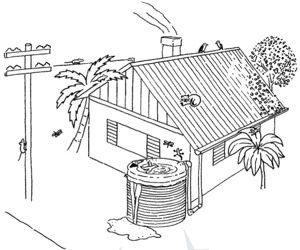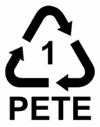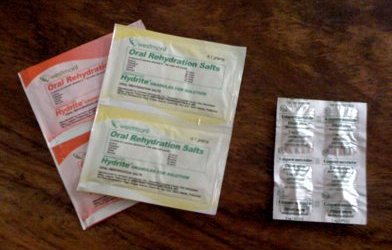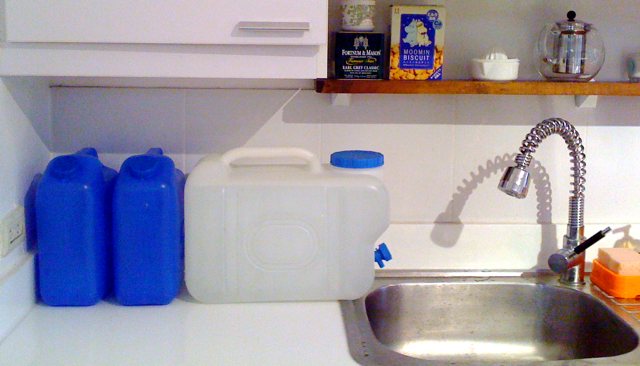Outbreaks of
waterborne illnesses are one of the biggest risks after a calamity. It's vital that survivors have access to clean water for drinking and washing. As a general guideline, America's
ready.gov website recommends households store at least
4 liters (1 gallon) of water per person, per day and and have a minimum of three days supply per person.
These figures are likely to be too low for a country like the Philippines with its tropical climate and scattered islands. No matter how much you store, supplies may eventually run low before infrastructure is restored or relief arrives so it's important to know how to treat water before drinking.
Here's a summary of a few simple methods that use equipment or ingredients accessible to most Philippine households.
Boiling
Many of us, especially those who have spent time the provinces, may remember our parents and grandparents boiling water for drinking. It's still the safest method of treating water but it does consume fuel.
To boil water for drinking:
- Put some water in a pot or kettle. Make sure the water has been filtered of debris, sediment and has not been contaminated by chemicals.
- Boil the water until it's bubbling vigorously for one full minute.
- After boiling, let it cool before drinking.
Chlorination with household bleach
- Add approx. 2-4 drops of bleach per liter of water (approx. 16 drops per gallon).
- Stir and leave it for 30 minutes.
- The water should have a slight bleach smell after 30 minutes.
- If you don't smell any bleach, treat the water again and wait an additional 15 minutes.
- Do not use the water if it still doesn't smell of bleach after the second treatment.
Make sure you use a new bottle of plain household chlorine bleach (5.25 to 6.0 percent sodium hypochlorite) with no additives. Opened and older bleach bottles may have lost its potency over time. More information:
FEMA and American Red Cross guide: Food and Water in an Emergency (PDF download).
Solar water disinfection (SODIS)
Solar water disinfection, or
SODIS is a new method that's starting to gain acceptance in tropical countries. It's simple, free and uses low-tech, easy-to-find materials. The World Health Organisation, UNICEF, and the Red Cross
recommend the SODIS method for treating drinking water in developing countries.

Pictogram showing the SODIS method by Samuel Luzi, Fundacion SODIS
See related article:
A cheap and effective way to disinfect water in tropical countries.
Other water treatment methods
There are many other methods you can use to create potable water for your family. However, they need more research, practice or require equipment or supplies that aren't so readily available.
Chemical contamination
Most of these methods work by killing disease-causing micro-organisms in the water. Unless you distill the water or use an appropriate filter,
any chemical contaminants will remain in the water. It's therefore important to stay way from water that may have been fouled by dangerous chemicals.
Continue Reading





 The clear plastic jerry can in the picture above holds 20 liters, which is enough to last one person for around 5 days. The blue plastic jerry cans hold just over 6 liters each. These can be purchased from hardware stores like Ace Hardware and True Value. (The 20 liter can was approximately Php300 and the blue 6 liter cans are Php49.)
We also keep additional jerry cans in a cupboard and bottled mineral water in the fridge and pantry, as well as a balde (water bucket) in the shower. In total, I estimate that my wife, baby and I can go almost two weeks just using the stored water in our one-bedroom condo unit.
The clear plastic jerry can in the picture above holds 20 liters, which is enough to last one person for around 5 days. The blue plastic jerry cans hold just over 6 liters each. These can be purchased from hardware stores like Ace Hardware and True Value. (The 20 liter can was approximately Php300 and the blue 6 liter cans are Php49.)
We also keep additional jerry cans in a cupboard and bottled mineral water in the fridge and pantry, as well as a balde (water bucket) in the shower. In total, I estimate that my wife, baby and I can go almost two weeks just using the stored water in our one-bedroom condo unit.